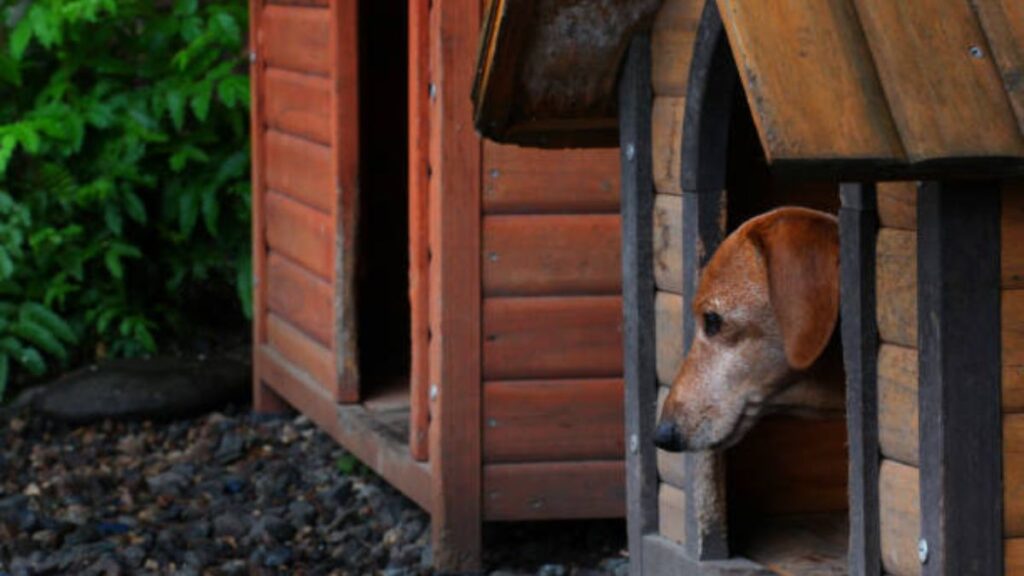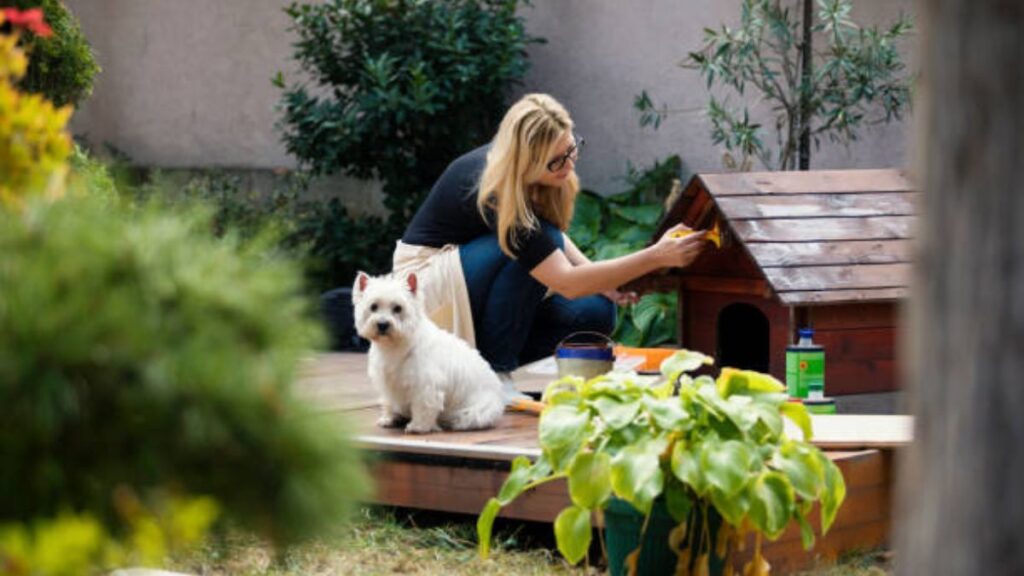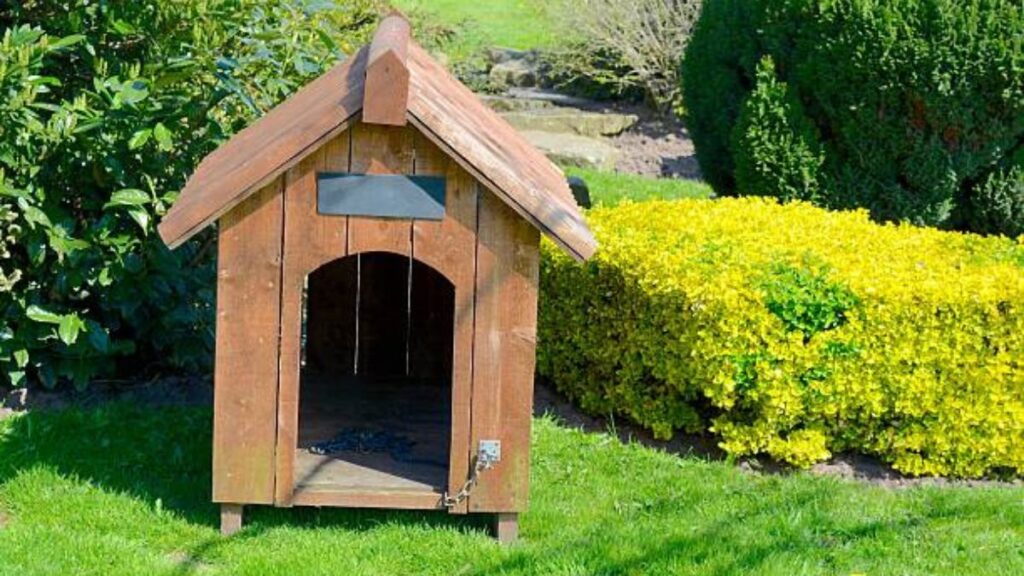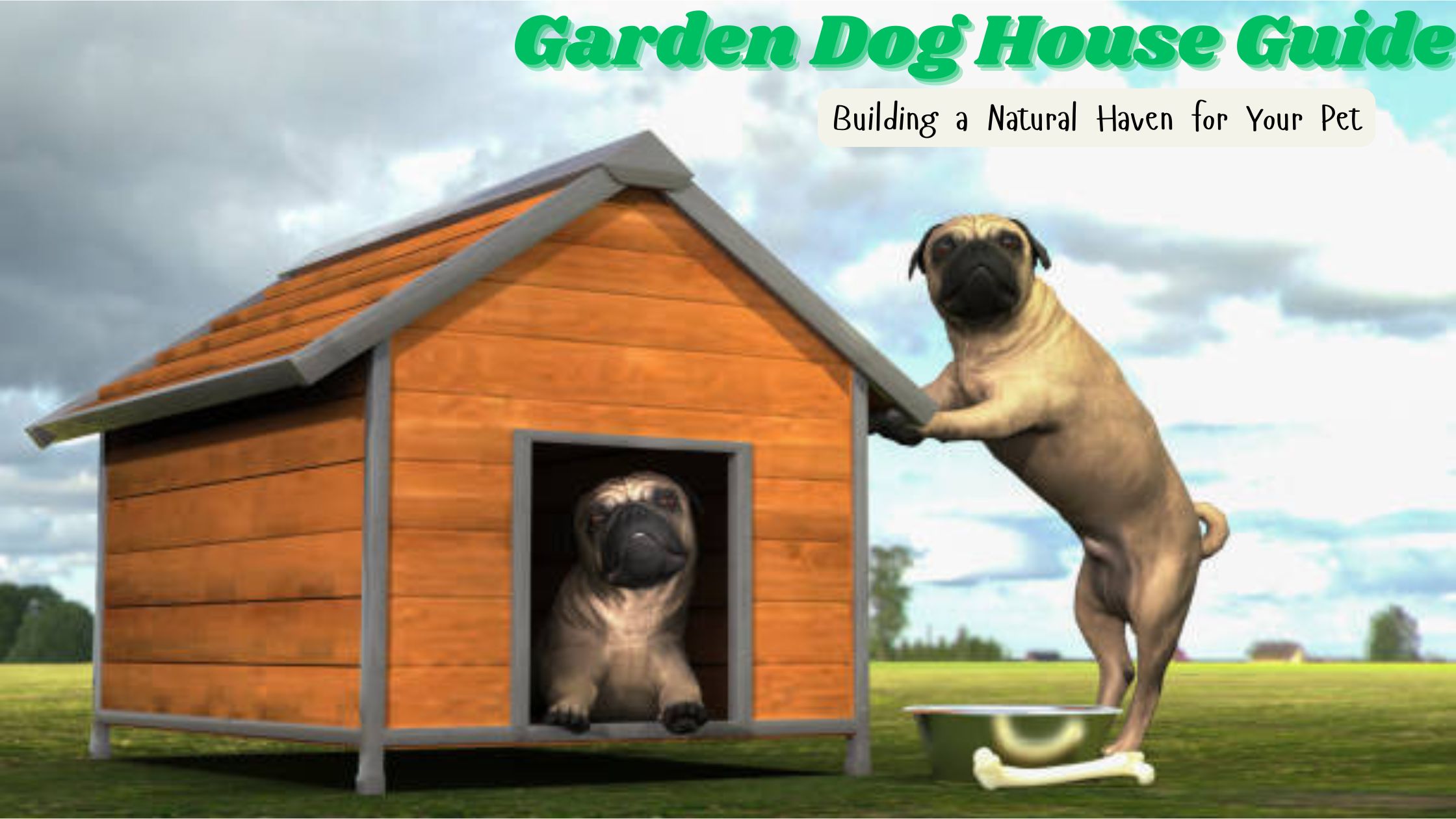Introduction:-
Garden Dog House Guide: Building a Natural Haven for Your Pet

Building a dog house in your garden is an excellent way to provide your beloved canine companion with a comfortable and safe shelter while enhancing the aesthetics of your outdoor area. By incorporating natural materials and thoughtful design elements, you can create a dog house that not only complements your garden but also caters to your pet’s needs. This guide will assist you in crafting a natural haven for your furry friend in your garden..
Tips for Garden Dog House
1. Choosing the Right Location
The first step in building a garden dog house is selecting the perfect spot. Consider the following factors:
- Shade and Sunlight: Ensure the location provides enough shade to keep your dog cool during hot days. Placing the house under a tree or next to a wall that offers shade throughout the day is ideal.
- Elevation: Avoid placing the dog house in low-lying areas where water might collect during rain. Elevated ground will help keep the house dry.
- Visibility: Choose a spot where your dog can easily observe the surroundings. Dogs enjoy keeping an eye on their territory.
2. Selecting Natural Materials
Opting for natural materials not only makes the dog house environmentally friendly but also ensures it blends well with your garden. Some great options include:
- Wood: Cedar or pine are excellent choices for a durable and weather-resistant structure. Ensure the wood is untreated to avoid any harmful chemicals.
- Stone or Brick: These materials can be used for the base of the dog house, providing stability and a natural look.
- Natural Insulation: Consider using straw, wool, or other organic materials to insulate the dog house, keeping it warm in winter and cool in summer.
3. Designing for Comfort
Your dog’s comfort should be a top priority. Here are some design tips:
- Size: Ensure the dog house is large enough for your dog to stand up, turn around, and lie down comfortably. However, it shouldn’t be too big, as this can make it harder to keep warm.
- Ventilation: Proper airflow is crucial to prevent overheating and condensation. Include small vents or a raised roof to allow for air circulation.
- Bedding: Provide soft, natural bedding inside the dog house. Materials like cotton or wool are great choices, offering comfort while being easy to clean.
4. Incorporating Natural Elements
Incorporating elements from your garden can enhance the natural feel of the dog house:
- Green Roof: Consider adding a green roof with low-maintenance plants like succulents or grasses. This not only provides additional insulation but also helps the dog house blend seamlessly with the garden.
- Surrounding Plants: Plant shrubs or small trees around the dog house to create a sense of enclosure and privacy for your pet. Be sure to choose non-toxic plants that are safe for dogs.
5. Safety and Maintenance Considerations
Safety and ease of maintenance are essential when building a dog house:
- Sturdy Construction: Ensure the dog house is built to withstand the elements and the wear and tear from your dog. Secure the structure firmly to the ground to prevent tipping.
- Non-Toxic Finishes: If you choose to paint or seal the dog house, use non-toxic, pet-safe products.
- Regular Cleaning: Design the dog house with easy access for cleaning. A removable roof or large door can make it easier to keep the interior fresh and hygienic.
6. Adding Personal Touches
Personalizing your dog’s house can make it even more special:
- Name Plate: Add a nameplate to the dog house, giving it a personalized touch.
- Toys and Accessories: Include your dog’s favorite toys or a chew-proof blanket to make the space feel like home.
What are the advantages of constructing a Garden dog house with an environmentally friendly roof?
Building a dog house with a green roof offers numerous advantages for both your pet and the environment. Here are some key benefits:

- Temperature Regulation:
- The green roof provides natural insulation, maintaining a comfortable temperature for your pet throughout the year. It keeps the house cooler in the summer and warmer in the winter.
- Environmental Impact:
- Green roofs absorb carbon dioxide and release oxygen, contributing to a healthier atmosphere. They also reduce the heat island effect, lowering the surrounding temperature.
- Aesthetic Appeal:
- A dog house with a green roof complements a garden setting, enhancing its visual appeal and adding a touch of nature to your outdoor space.
- Stormwater Management:
- The green roof absorbs rainwater, reducing runoff and helping manage stormwater more effectively. This prevents water pooling around the dog house, minimizing potential damage.
- Biodiversity Support:
- The plants on the green roof attract insects and small wildlife, promoting biodiversity in your garden and creating a habitat for these creatures.
- Longevity of the Dog House:
- The green roof protects the underlying roofing materials from UV rays and harsh weather conditions, extending the lifespan of the dog house.
- Energy Efficiency:
- If the dog house is connected to an outdoor power source, the green roof’s energy efficiency can lower energy consumption for heating or cooling purposes.
- Sound Insulation:
- The green roof acts as a sound barrier, reducing noise from rain, wind, and other environmental factors, creating a quieter environment for your pet.
Incorporating a green roof into your dog house design is an environmentally conscious choice that offers a range of practical advantages while enhancing the aesthetic and functional aspects of your garden.
Should a Garden Dog House Be Elevated?
Elevating a dog house off the ground is widely recommended for several significant reasons:

1. Moisture Protection:
- Prevents water damage during heavy rain or snow, keeping the floor dry and reducing the risk of mold and mildew, which can harm your dog’s health.
2. Enhanced Insulation:
- Raising the dog house improves air circulation, providing better insulation. This helps regulate temperature, keeping it warmer in winter and cooler in summer, creating a more comfortable environment.
3. Pest Prevention:
- Elevating the dog house helps prevent pests like fleas, ticks, and rodents from entering, reducing the likelihood of infestations and protecting your dog from bites and diseases.
4. Increased Durability:
- Keeping the dog house off the ground prevents direct contact with soil, which can cause wood or other materials to deteriorate over time, extending the lifespan of the dog house.
5. Better Air Circulation:
- Allows air to circulate beneath the dog house, preventing heat buildup and creating a cooler, more comfortable space for your dog, especially during warmer months.
6. Easier Cleaning:
- A raised dog house is more accessible to clean underneath, making it easier to maintain a hygienic environment and remove debris like leaves, mud, or snow.
7. Safety and Comfort:
- Reduces exposure to cold ground in colder climates, preventing your dog from lying directly on a cold, hard surface, which can be uncomfortable and even harmful over time.
8. Improved Drainage:
- Elevation ensures that rainwater or snowmelt drains away from the dog house, preventing water from pooling around the base.
Raising a dog house off the ground is a straightforward yet impactful way to enhance its durability, provide greater comfort for your dog, and ensure a healthier environment.
Conclusion
In your garden, building a natural dog house is a rewarding project that enhances both your pet’s comfort and the aesthetics of your outdoor space. With an emphasis on natural materials, thoughtful design, and your dog’s unique needs, you can craft a beautiful and practical haven for your furry friend. Whether you’re an experienced DIYer or a novice gardener, this guide will assist you in constructing a dog house that perfectly harmonizes with your garden’s landscape and your pet’s requirements.
References
- PetMD: Explore the best materials and considerations for building a dog house, emphasizing the significance of proper insulation and ventilation.
- Source: PetMD – How to Build a Dog House
- The Spruce Pets: Gain insight into selecting the ideal location and materials for a dog house, along with valuable tips for its maintenance.
- Source: The Spruce Pets – Dog House Building Basics
- RSPCA: Discover guidelines to ensure the safety and comfort of pets when constructing outdoor structures, including dog houses.
- Source: RSPCA – Outdoor Dog Care
- American Kennel Club (AKC): Learn how to create a comfortable and secure outdoor space for dogs, including considerations for designing a dog house.
- Source: AKC – Outdoor Dog Safety
- Mother Earth News: Explore articles on eco-friendly building techniques, including the use of natural materials like wood and stone in garden projects.
- Source: Mother Earth News – Eco-Friendly Building
